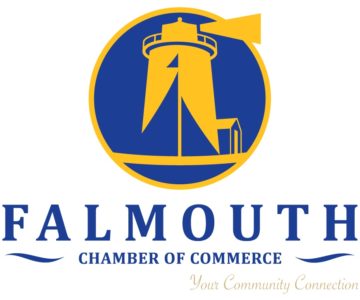By Douglas Karlson
The shellfish farmers’ arrival is timed with the tide.
At 8:15 a.m., Casaundra Healy and Dave Mullins pull into the Wellfleet Harbor parking lot in a pickup truck towing a 24-foot Carolina skiff. Soon the skiff is skipping across the water toward Indian Neck Beach.
Healy and Mullins are employed by A.R.C. Hatchery (Aquaculture Research Corporation), a Dennis-based shellfish company. Mullins is a shellfish farmer, and Healy is the company’s Wellfleet shellfish farm supervisor.
In the back of the boat are large plastic mesh sleeves containing juvenile oysters. These oysters were removed at low tide several days earlier, and, after being tumbled in a drum to remove new shell growth and encourage a deeper cup, will now be placed back in the metal cages that protect them on the sandbar.
Mullins steers the boat toward the A.R.C. Hatchery grant, which is located on a sandbar a few hundred yards off the beach. Wellfleet Bay is notoriously tricky to navigate, with unpredictable muddy shoals, thick fog, fast moving tides and submerged shellfish cages. In the winter, the cold and dark are added challenges.
But Wellfleet is special because of the water flow and salinity. “It’s a phenomenal growing area due to the tidal flush,” says Rob Doane, president and CEO of A.R.C. Hatchery.
Mullins maneuvers alongside the rows of semi-submerged oyster cages and jumps over the side into knee-deep water to set two anchors.
It’s difficult work, and this is no nine-to-five job. The days often extend over two tides. Twelve hours a day, six days a week. But like most farmers, Mullins and Healy take pride in what they are growing and take advantage of good weather to stay ahead of the heavy workload.
In addition to the oyster grant off Indian Neck Beach, A.R.C. also grows quahogs off Mayo Beach on Wellfleet Harbor. Both oysters and clams begin their lives in Dennis.
Cape Cod’s Sole Shellfish Hatchery
Set on 40 acres down a dirt road near Chapin’s Beach, the A.R.C. hatchery and nursery was established in 1960 and bought in 2015 by the current owners, a group of investors with an interest in protecting the Cape Cod shellfish industry. The new owners made a multi-million dollar investment to purchase and upgrade the facilities.
Doane wrote the investment plan that pulled together investors who were interested in saving the critical hatchery which supplies most of the shellfish farms on Cape Cod. The deal to acquire the company involved placing 30 of A.R.C.’s 40 acres into conservation with funding provided by the state. Prior to coming to A.R.C., Doane, who received a business degree from the University of Richmond, worked for Mac’s Seafood in Wellfleet where he learned the shellfish business.
The A.R.C. hatchery produces oyster seed, quahog seed and surf clam seed. In addition to the hatchery, A.R.C. operates three nurseries where the seeds mature, in Harwich, Chatham and Dennis, and shellfish farms in Wellfleet and Barnstable harbors.
A.R.C. also provides municipalities with the shells needed for oyster reef restoration.
By locating nurseries and farms in different locations, and by diversifying into several types of operations, risk is reduced.
A.R.C. bids every year on town contracts to provide seed for towns’ nurseries, which raise the shellfish until they are large enough to be placed on sandbars.
The company distributes its oyster seed to other nurseries and its baby oysters and clam seed to shellfish farmers. The company grows its own shellfish on its grants in Barnstable and Wellfleet and ships the harvested shellfish to wholesale markets in Boston.
The company has 27 employees, including management and administration, farm crews, hatchery and nursery staff.
According to Doane, the business is growing, with seed clients all the way down to New Jersey. There’s a waiting list to purchase seed and the company has never been able to fully meet demand.
As the only hatchery on Cape Cod, A.R.C. plays a critical role in the region’s aquaculture industry. If you eat an oyster from Cape Cod, there’s a very good chance it was spawned at A.R.C., which produces about 80 percent of the oyster seed used on Cape Cod oyster farms.
It doesn’t take many oysters (called brood stock) to produce the number of larvae needed; each oyster spawns about 40 million seeds. While wild oysters only spawn in July and August, in the hatchery the process is controlled throughout the year and triggered every two months by placing the oysters in the water that is temperature controlled.
The brood stock which produces the seed is bred to be disease resistant and fast growing, with deep cups and good looks that present well when served over crushed ice on raw bars.
The trickiest part of the operation, says Doane, is growing the micro algae that is used to feed to trays of spawn. The room where this is done resembles a scene from a science fiction film, with large tall clear cylindrical tanks containing bubbling green water. This water is then pumped into rectangular trays filled with oyster spawn, each tray can contain up to 500,000 animals. It will take a year and a half for them to reach adulthood.
Once metamorphosis occurs, the baby shellfish are transferred to nurseries which use natural sea water flowing through at a high rate to provide the nutrients the baby shellfish require.
“We’re out here in the middle of nowhere and that’s critical to the process,” says Doane as he stands by the outdoor tanks near the creek behind Chapin’s Beach where oysters about an inch-and-a-half in length are growing.
“We’re a farm, essentially,” says Doane.
Such farms are critical to the survival of the shellfish industry, he explains, because wild shellfish are at just one percent of historic levels.
Hatcheries and nurseries thus play a vital role. While A.R.C. is the only hatchery on the Cape, there are many nurseries operated by both private companies and towns operate them along the coast. According to Doane, oyster and quahog larvae can’t survive through metamorphosis in the wild due to ocean acidification and bacteria loading.
Island Creek Builds on Success
Christopher Sherman, president of Island Creek Oysters in Duxbury, credits advances in aquaculture with spurring renewed supply – and consumer interest – in shellfish.
In addition to operating a hatchery and nursery and shellfish farms, Island Creek also operates six restaurants, two located in Boston and the others in Burlington, Portsmouth, N.H., and Portland, Maine and a raw bar in Duxbury. The company was founded by Skip Bennett in 1990. According to Sherman, Bennett describes the business as an overnight success story, 25 years in the making,
The oyster operation employs 60 full-time year-round staff, and 45 to 50 seasonal staff. An additional 200-plus work in the restaurants.
Rather than distributing to wholesale markets, Island Creek has no middlemen and ships direct to restaurants, and also has a formidable retail mail order business. Its customers are located in 41 states.
About 90 percent of the company’s oysters are shipped to restaurants, the remaining 10 percent supply the mail order business. All totaled, the company ships about 14 million oysters per year.
To be successful selling a commodity, Sherman says branding is very important. He describes his company’s oysters as a “differentiated branded commodity.” That differentiation is due to the subtle flavor profile found in the rich waters of Duxbury.
The key to the resurgence of the oyster industry, says Sherman, was the development of farming technology. Historically, oysters were a staple food, but when wild stocks were depleted due to overharvesting and pollution, oysters fell out of favor. But with new technology, such as that used by A.R.C. and Island Creek, demand has re-awakened.
“Over the past ten years demand and production have grown exponentially,” says Sherman. The key, he says, is renewed interest in American gastronomy.
That’s why there are currently about 370 oyster farms in the United States, he says, and plenty of capacity to meet growing demand. According to the Massachusetts Department of Agricultural resources, the shellfish aquaculture industry in Massachusetts was valued at $25.4 million in 2013, which generated approximately $45.5 million in the state’s economy. Shellfish farms generate about 900 jobs, and generate about $20 million in labor income.
Back in Wellfleet, Healy and Mullins complete their work, loading the boat with more than 70 sleeves of oysters to be brought back to A.R.C. for tumbling. They examine their crop and check the nets protecting the quahog seeds.
In the distance, other shellfishermen have driven pickup trucks onto the flats to work on farms closer to shore.
“Some of these guys are brilliant, they have generations’ worth of observation and experience,” observes Mullins.
Healy agrees. “When they start talking about what they do, you take in every word. It’s a close-knit community; we support each other 100 percent.”
Waiting for the incoming tide to lift the skiff off the sandbar, Healy reflects on her surroundings.
“It’s a perfect blend of sustainability, because oysters filter the water,” she says.
She looks toward the shellfishermen in the distance, loading oysters into the backs of their trucks. “These people are really passionate about it. They want to preserve Cape Cod.”
Coastal Engineering to the rescue
As if raising and distributing shellfish weren’t complicated enough, add the complex task of obtaining government permission. That’s where Coastal Engineering Co. comes in. Headquartered in Orleans, Coastal Engineering was responsible for the design of A.R.C.’s new shellfish nursery on the Herring River in Harwich. That took more than three years, but according to Don Munroe, manager of the firm’s marine department,
“I guess they’re getting some of the highest productivity there.”
Munroe is currently working with the town of Wellfleet to expand shellfish propagation. The plan is to deposit old shells on the seabed to establish a surface for oyster spat, so wild oysters can grow. It’s called culching.
He’s currently working with the state’s Department of Waterways, the Army Corps of Engineers and Massachusetts Department of Environmental Protection.
The project is expansive, involving many acres, says Munroe. But because culching is considered fill, permits are required. Culching has already begun, but once all the permits are obtained, the state will help out with the project.
“It’s a positive for the environment,” says Munroe.























